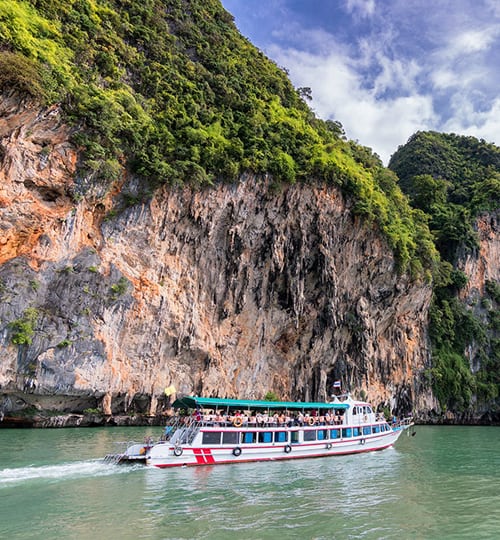Useful information:
Safety, schools, Insurance, etc.
Expat Resource Guide
International Schools
Georgetown International Academy (GIA)
GIA is located in Guyana’s capital city and serves the diplomatic and expatriate communities as well as Guyanese families who desire an American accredited educational experience. GIA has approximately 120 students from Nursery through Grade 12, from 17 countries. Our 22 teachers come from Guyana, the US, Canada, and Guadalupe. GIA, formerly known as the Georgetown American School, was founded in 1971 and is an official American Overseas School (A/OS) and also a member of the Association of American Schools in South America (AASSA). Curriculum: American Address: 9-10 Delhi Street, Prashad Nagar, Georgetown, Guyana Tel: +592 226 1595 Email: director@georgetowninternationalacademy.org
Marian Academy
Marian Academy is a school under the Roman Catholic Church of Guyana. They admit both primary and secondary school students. The school has a range of facilities from separate primary and secondary school libraries, science labs, chapel, counselling service, sports field, multipurpose court and auditorium. Curriculum: Address: Carifesta Ave, Georgetown, Guyana Website: www.marianacademy.edu.gy/
Residents Visa and Work Permit information
Visitors from certain countries including the US, UK, the EU and Australia may enter and stay from 1, 3 to 6 months depending on nationality. Those who are not exempted must apply for a visa at a Guyanese embassy or consulate. Those travelling for tourism may obtain a visa upon arrival, however they need to have an invitation or letter from a local sponsor. The Guyanese Ministry of Foreign Affairs has a complete list of countries and their corresponding visa exemptions and regulations:
www.minfor.gov.gy/images/minfor_docs/consular_services/visa_exemption.pdf.
Here is a list of documents required to apply for a visa-on arrival:
Visitors:
- Two photographs, as well as name and address of inviter/sponsor to be provided on arrival. Name and address of hotel if visitor is a tourist.
- Letter of invitation from inviter/sponsor to be presented on arrival.
- Telephone number and/or e-mail address of inviter/sponsor and intended place of stay to be provided on arrival.
- Evidence of finances to cover expenses for 30 days to be provided on arrival;
- Applications will be rejected if the above criteria are not fulfilled;
- A maximum of two (2) Extensions of Stay will be granted. Each Extension of Stay will be for a period of one (I) month.
Employment:
Name and address of sponsor/employer must be provided to the Ministry of Home Affairs for processing before the applicant arrives in Guyana.
Telephone number, fax and/or e-mail address of sponsor/employer must be provided to Ministry of Home Affairs for processing before the applicant arrives in Guyana.
Place of employment must be an established business and must be registered and be compliant with NIS and GRA rules/regulations.
Name and address and gender of employee/person coming to work in Guyana must be presented to the Ministry of Home Affairs by the Employer prior to arrival.
Approval to have Visa and Work Permit issued will be given to;
- Employer
- Immigration
- Visa on Arrival and Work Permit will be issued on arrival.
Visas will be granted for a three (3) year period from the Guyanese Ministry of Foreign Affairs www.minfor.gov.gy/images/minfor_docs/consular_services/New_Immigration_Procedures
Accommodation:
Guyana offers a range of temporary accommodations for rent: hotels, guesthouses, bed and breakfasts and lodges. There are plenty of hotels in the capital. These are decent and adequate. However the state of the more luxurious and expensive ones in some cases do not match the high price tag. A guesthouse is a better alternative; low-priced, good quality and plenty across Georgetown. Lodges, cabins and community eco-lodges are available within the jungle for those wishing to be closer to nature. Outside of the capital, quality of accommodations wanes, as most guesthouses may come incomplete, without amenities such as fans and mosquito nets.
Driving License:
Foreigners must obtain a Guyanese driving permit, which is valid for one month from the Guyana Revenue Authority. Applications are now also accepted at the CJIA airport to facilitate processing for tourists. Expats would need to present their domestic license and residence details within Guyana. For more information please visit: www.gra.gov.gy/24-traveller-sinformation/88-driving-in-guyana-information
If you’re planning on staying in Guyana longer than a month, you will need to apply for a domestic license, also through the Guyana Revenue Authority. It will cost $2000 and valid for 3 years. The required documents are:
- Application for driver's license
- Taxpayer Identification Number (TIN)
- Valid identification. Passport or National ID
- Three identical photographs
- A competence issued by a certifying officer
Foreigners should present their foreign license. If the license is not written in English a translation should be submitted From the Guyana Revenue Authority site: www.gra.gov.gy/driver-s-licences/
Healthcare:
The healthcare facilities and services in Guyana are below western standards. Although hospitals may treat minor cases easily, more complicated treatments is limited. Poor sanitation and lack of trained specialists also contribute to this issue. The ambulance service is also unreliable. Medical treatment is free in Georgetown, however you will be charged for an appointment with a doctor. It’s recommended to acquire a comprehensive health insurance that can cover or reimburse treatment costs, medical evacuation or even repatriation.
Expats are advised to stock up on personal medications, as these may not be available. Also the humid climate may affect certain types of medicine so be sure to check whether special storage should be considered. Insect-borne illnesses like malaria and dengue are prevalent in the country, mostly due to its climate. Precautionary vaccination should be sought before travelling.
Insurance Companies:
GTM Group of Insurance Companies
The GTM Group is a leading insurance provider in Guyana and in the Caribbean islands of
Grenada, St. Lucia and St. Vincent & the Grenadines.
Address: 27-29 Robb & Hincks Streets, Georgetown, Guyana
Tel: +592 225 7910 19
Email: gtmgroup@gtm-gy.com
Website: www.gtm-gy.com/index.html
Hospitals:
Georgetown Hospital
Address: New Market & Thomas Street, Georgetown, Guyana
Tel: +592 2 278 244
St. Joseph's Mercy Hospital
Address: Georgetown, Guyana
Tel: +592 2 53185
Guyana Expat Health Insurance Guide
Guyana may be located in South America, but it is part pf the Caribbean and this is echoed in the culture of the country. However, don’t be surprised to see Dutch, Chinese, Portuguese and Indian influences during your time there due to its history of colonial rule and slavery.
Whilst many assume countries in the West Indies to be ideal locations for luxury beach holidays and absorbing Caribbean culture, Guyana offers more in the way of outdoor adventure. Dense tropical forests and cascading waterfalls give way to open dunes and oceans rich with diving opportunities. However, it is the diverse mix of Guyanese people that make the country such a unique place to live and visit.
Climate:
Those who visit and live in Guyana are blessed with a warm and tropical climate throughout the year. Sometimes, the rainfall and humidity can be overbearing, but coastal locations benefit from cooling sea breezes. The country can be split into four geographical zones, each which has a slightly different climate. The majority of Guyanese citizens live on the low plain along the Atlantic coast.
The capital, Georgetown, is located here and temperatures average 27°C-28°C throughout the year. As you go inland a little there is a white sandy region rich with sand dunes and areas of clay where very little vegetation grows. This area gives way to dense highland forests in the middle of Guyana, and rainforests and savannahs in the south and far west border. These areas tend to be much more humid and wet compared to the coast. Although the different areas of Guyana appear visually different, climatic changes are minor and there are also little alterations from season to season. Generally, the north-western areas of Guyana near Venezuela tend to receive the most rainfall, as around 2500mm annually.
Further east, this drops to 2000mm and down to 1500mm in the southern regions and Rupununi Savannah. Fifty percent of Guyana’s yearly rainfall occurs in the summer, from May until the end of July on the coast and April until the end of September for inland areas. Coastal areas also experience a second wet season between November and January. Regardless of area, rainfall usually occurs in the afternoon as a heavy downpour or quick thunderstorm. You will never experience an overcast day in Guyana as, even before and after rainfall, the sky presents blue skies and bright sunshine. Temperatures in Guyana can easily hit over 32°C, which can feel even hotter due to the humidity. July is considered the hottest month nationally, whereas February is the coolest with temperatures hovering between 23°C and 29°C.
New residents and visitors to Guyana should be prepared for hot nights, with temperatures only ever dropping by a few degrees. Humidity levels average a staggering 70% annually, with inland regions hovering around 90%. Guyana is rarely affected by tropical storms, experiencing just heavy rainfall in the summer months. Due to its location, Guyana does not have a hurricane season.
Culture:
Guyana’s identity is a mix of Indian, African, European and Caribbean influences. Colonial rule and the country’s history of diverse immigrant groups calling the country home means that life in Guyana is unlike anywhere else. Despite the citizens of Guyana having differences in culture, religion and beliefs, they are all united by sharing a similar way of life and love of socializing and relationships. Guyana may be a South American country but it is considered a mainland territory of the Caribbean and this is most noticeable on the West Coast.
Cuisine, relaxing and celebrations are all Caribbean style and many who identify as Caribbean often refer to themselves as Afro-Guyanese and are mostly Christian or Indo-Guyanese and are generally Hindu and Muslim.
Much of Guyana’s unique culture and diverse population is explained in its history. The country was a Dutch colony in the 17 century before it was claimed by Britain in 1815. Before this, Spain had seized control of Guyana in the early 1600s, before claiming the country unattractive and moving on. Slavery is a huge part of Guyana’s past and is the reason for such a melting pot of cultures today. Slavery was abolished in 1834 and many of the Indian, African and Chinese descendants continued residing in Guyana and their descendants still call the nation home today.
Language:
It will not come as a surprise that there are many languages spoken in Guyana. English is the official and national language of the country and it is taught in all schools. The second most common language is Guyanese Creole. It is a Hybridge English and Caribbean dialect with influences of African, Indian and Dutch tongues. However, there are a number of different variations of the language existing throughout Guyana.
English Phrase Guyanese Creole Translation
Do you understand what I am saying? Yah understand wah meh ah seh?
What is that? Dah ah wha? or Wuh is duh?
I don’t know Meh nah know
How are you? How yuh do?
What do you want? Wuh wuh want?
Good morning Marnin
On the coast, Expats will notice that many Afro-Guyanese citizens speak in Caribbean English. This is what many expats consider to be a stereotypical way of speaking throughout the Caribbean, with English phrases being chopped and changed, injected with West African influences, and delivered with a Creole tongue. It is very similar to Guyanese Creole and expats will be able to pick out similarities between the two. Expats should not be surprised to hear Amerindian languages, Chinese, Hindi and Tamil spoken in certain parts of Guyana. Portuguese is also quickly becoming a second language in the south of the country on the border with Brazil.
Transportation:
Guyana is the third smallest country in South America and the majority of the country’s transport infrastructure is concentrated in the north. The roads are often crowded with a mix of mini-buses, cars, bicycles and large commercial vehicles. Expats can also expect to see horse drawn carts, stray animals and livestock sprawled across the streets too.
Foreigners are more than welcome to drive in Guyana and you can simply trade in your national licenses for an international permit in the country free of charge. However, due to the questionable state of some roads, dangerous driving from locals and lack of car rental opportunities in some places, it is often much safer and less of a headache to rely on public transport.
Throughout the northern portions of Guyana, home to cities such as Georgetown, Linden, New Amsterdam, and Anna Regina, public transport is how many choose to get around. There are very cheap minibuses which run along the coastal road and to Cheddi Jagan International Airport and the city of Linden. Around the cities themselves, minibuses are run by private drivers. They operate in allocated zones around the cities on specific routes and have a controlled fare structure so do not be worried about being over charged.
If you want freer movement around the north, it is best to hop in one of the countless yellow taxis. Alternatively, book a cab with a reputable company. Never hail a taxi from the roadside unless it is one of the official yellow taxis which are easily distinguishable.
Guyana has 607 miles of navigable inland waterways. The government run a coast-hopping services from Georgetown to several northern ports. The Essequibo, Demerara and Berbice rivers all have ferry services to allow for a quicker journey for those travelling. However, sometimes these crossings are closed due to bad weather or flooding. Guyana did once have a railroad along the coast. It was used for both cargo and passenger services that there was, in the past 10 years, talk of the train track being resurrected. Currently, Guyana has no train service and citizens rely on public transport and their own vehicles.
Healthcare:
The standard of healthcare in Guyana is very poor and does not meet the standards set by Western medicine. There is a shortage of appropriately trained staff, with many emigrating to countries that will provide a much higher salary for their expertise and better working environments. Medical professionals currently working Guyana are highly demotivated, which is understandable when you also consider the poor medical facilities, lack of basic equipment and medical supplies they are given to work with. A lack of sanitation and a poor ambulance service are also to blame.
Public healthcare is divided into five levels, ranging from Level I hospital posts to Level V referral hospitals. Treatment provided by public facilities is free, however, there are limited services available and patients will have to pay for a private room. Emergency surgery and specialist medical treatment are sparsely available. Guyana cannot afford to invest in new technology and research so equipment is archaic and poorly maintained. Those who seek these procedures and can afford it often head overseas.
There is a private medical sector in Guyana, with a few facilities in Georgetown. Private hospitals are responsible for their own financing and those who opt for treatment at these Westernized facilities will need to pay through private health insurance or out of their own pockets.
Due to Guyana being one of the poorest countries in the world, only expats and a minute portion of the Guyanese population can benefit from this level of care. It is imperative that expats invest in comprehensive medical insurance whilst in Guyana. Travelers should also invest in travel insurance. This will ensure you receive exemplary care across all areas, from inpatient to specialist consultations.
Money:
The Guyanese Dollar, shown as GYD, G$ or GY$ is the ofcial currency of the country. Each dollar is comprised of 100 cents. Expats will often see prices shown as $ instead of G$ or GY$, but rest assured the price shown is for Guyanese Dollars, just without the extra letters. Notes come as $20, $100, $500, £1,000 GYD. Denominations of coins include $1, $5, $10, 1 5, 10, 25 and 50 cents. Guyana has long been a cash-based society and has resisted the advancements shown in international financial systems around the world.
The country does have has implemented the use of ATMs, debit cards, credit cards and online payments, but the infrastructure is nowhere near as developed as countries in Europe, North America and the Middle East. There are three options for expats wishing to open a bank account in Guyana. For some, using their home account is the best option. Others operate from an offshore account whereas others open a Guyanese account. Opening an account in Guyana means you can pay household bills, receive your salary in the local currency and have more freedom financially in the country. Services and rates vary between each provider so expats should consider the following when choosing:
- Fees
- Availability of online banking
- Local branches
- Language spoken in local branches
- Services on offer
- Paperwork needed to open account
Schooling
Guyana’s education system is the same as the British model. For many years Guyana had one of the best education systems in the Caribbean. However, it had issues with inadequate funding and families who could afford it began sending their children to schools outside the country.
Despite budget cuts, Guyana is still championed for its schooling throughout the West Indies. It is compulsory for children to attend school from the age of five to 16. Students will sit the NGSA (National Grade Six Assessment) for entrance into high school. ‘A Levels’ were once offered in Guyana but these have been replaced by CAPE exams. These are given in all Caribbean countries and offer three types of cortication. Lessons in Guyana are taught in the national language, English. Many expat children, even those who are not from the UK or America, have a grasp of the language and are free to attend a public school in Guyana. However, the majority of parents tend to send their children to international schools so that they can study for the internationally recognized IB (International Baccalaureate).
Georgetown International Academy is the most popular international school. It is a bilingual establishment and based on the US education system. Tuition rates fall between $3,600 and $9,000 depending on the grade of your child.
Food & Drink:
Guyanese food is a culinary hybrid of African, East Indian, Portuguese and Chinese influences. These influences make us the basis for traditional Caribbean fare, with hearty curries, rice and peas, plantain and roti served as daily favorites. Households in Guyana cook three meals a day so expats should never fear going hungry.
Stews and curry dishes are very popular in Guyana. Pretty much every fish, meat or vegetable can be popped in a curry, but the most traditional is curry chicken. This is often served with rice and peas, along with a roti to mop up the juices and pick at the chicken with. Cooked on the bone, the chicken is incredibly tender and the tortilla-like roti helps absorb some of the heat. For more of a stew, expats and visitors should try pepper pot. It is Guyana’s most popular stew, as well as national dish, and traditionally served at Christmas. Stewed meat is served in a sauce flavored with cinnamon, Caribbean peppers, and cassava root.
You will usually find your meals in Guyana are served with white rice alongside plantain, yam or okra. Most meals also come with some form of bread. If this isn’t roti, it will most likely be dumplings or cassava bread. If your palette has always had a penchant for Chinese flavor, Guyanese chow-mein will not let you down. Chow-mein noodles are boiled and fried with local vegetables and seasoned chicken. It is a popular meal with families as it is cheap to make in large quantities and still packs lots of flavor. Caribbean food isn’t best known for its desserts, but there are some sweet treats you will likely see in Guyana. Tropical fruit is readily available, so expect to nibble on fruit rolls, pineapple cake and coconut cake. Banana bread is a popular treat and banana fritters with vanilla ice-cream are a popular choice.
When it comes to an alcoholic tipple, dark rum is the main contender in Guyana. National favorites include El Dorado, X-tra Mature and XM 10 Year Old. They are of such good quality they are usually drunk neat. If you’d prefer something a little less potent, Banks Beer is the national beer. The lighter Carib beer (of Trinidadian roots) is also widely drunk. Aside from the usual imported fizzy pop, coconut water and cane juice are high on the list of non-alcoholic favorites. The most common local drink is Sorrel; a sweet cerise beverage made from the Roselle plant.
Safety:
When you read about crime in Guyana, official government websites will make out as if you are flying into a war zone. Granted, crime levels in the country are high and it suffers from lack of policing. Murder and armed robbery are an issue and muggings and burglaries take place in broad daylight. However, in a country that suffers greatly with poverty and a huge gap in wealth between those at the top and those at the bottom, often crime can be out of desperation.
Reading official websites will give you an overview of Guyana’s safety, but they fail to mention that day to day the locals are incredibly warm and petty crime is as bad as it gets. Expats and visitors should be vigilant and keep valuable items well hidden, perhaps using a money belt. The capital, Georgetown, is where the majority of crime happens and foreigners are very rarely targeted but can end up caught in scenarios. Remaining alert and using common sense, just like you would in the capital city of any country, is key.
The only other concern expats and face is related to health. Before travelling, visit your doctor. They will ensure your vaccinations are up to date and also advise you to receive Hepatitis A, Tetanus and Yellow Fever injections. Others to consider, which aren’t compulsory, include Hepatitis B, Rabies and Typhoid. It is also worth noting that Malaria and Dengue Fever are common to the country and cases of chikungunya Virus have been confirmed.
Places to Visit:
Guyana has a troubled history, riddles with political instability and inter-ethnic tension. However, as the years have ebbed away, so has the negativity. Today, Guyana is one of the Caribbean’s best kept secrets and whether you want to learn more about the country’s heritage to explore its natural gems, there is plenty to see and do.
Georgetown
Lapped by azure blue waters, Georgetown is the capital of Guyana. It is nicknamed the Garden City of the Caribbean, it is rich with historic monuments and colonial architecture which echoes it’s past. The city is easy to navigate and is a wonderful place to explore.
Kanuku Mountains
Within the Upper-Takutu Essequibo region of Guyana is the Kanuku Mountains. The Eastern and Western ranges are separated by the Rupununi River and the lowlands are home to a vast majority of Guyana’s wildlife. The mountains are recognized by the WWF are a protected area and guides can help visitors explore the region.
Kaieteur National Park
Formed of rainforest, savanna and impressive waterfalls, Kaieteur National Park is a biodiversity bubble in Guyana. It is government protected a site of geological importance. The staff of the park are from Guyana’s indigenous communities and provide valuable insights.
New Amsterdam
The riverside town is Guyana’s oldest town and the majority of buildings date from the country’s period under Dutch rule. The Mission
Chapel is one of Guyana’s most historic churches and was built in 1814. A popular tourist attraction, it is a great place to learn about Afro-Guyanese history.
Parika
A small port town in Guyana, Parika is a market town. Home to only 4,000 people, there is a mix of Guyanese and Brazilian residents. Visitors to Parika love to explore the endless markets and enjoy a boat ride to Bartica.
Snow Adventure
Winter Sports
Interdum exercitation penatibus, praesentium facilisi accusamus fermentum, sagittis.
Forest Tours
Camping
Interdum exercitation penatibus, praesentium facilisi accusamus fermentum, sagittis.









